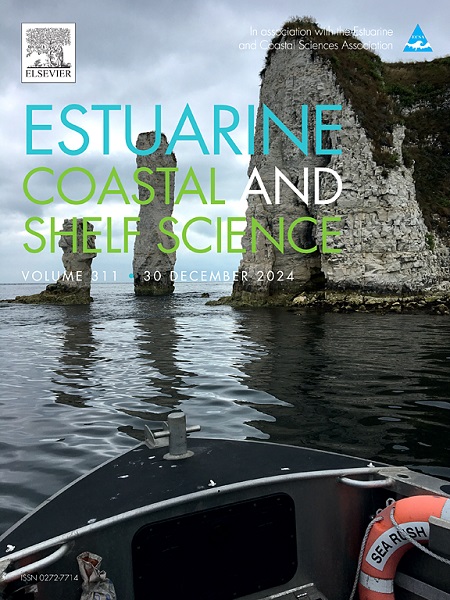Assessment of feeding patterns of the mottled scorpionfish (Pontinus clemensi) in the Galapagos Marine Reserve
IF 2.6
3区 地球科学
Q1 MARINE & FRESHWATER BIOLOGY
引用次数: 0
Abstract
The mottled scorpionfish (Pontinus clemensi) is a species of high economic, cultural and ecological value in the archipelago, which is exposed to possible overexploitation for local consumption. Trophic information is essential not only to provide insights into their role in the ecosystem but also provides a theoretical basis for the management of these resources. We determined the feeding patterns of P. clemensi applying complementary techniques of stomach content analysis (SCA) and stable isotope analysis (SIA). Sampling was conducted at four sites of fishing importance within the Galpagos Marine Reserve (GMR) between November 2017 and April 2018, obtaining 105 stomachs and muscle samples. The Prey-specific Index of Relative Importance (%PSIRI) determined Anchoa ischana as the most important prey, with differences (p < 0.05) in its consumption between seasons, sex, and life stages. However, the δ13C values did not show differences (p > 0.05) between sexes and life stages, suggesting the use of the same feeding areas. The δ15N values showed differences (p < 0.05) between seasons and life stages, pointing towards the consumption of prey from different trophic levels depending on the seasonality and size of the individual. A specialist-type feeding strategy was determined in most categories (Bi < 0.6) except for juveniles that display a possible generalist tendency (Bi = 0.64). The calculated trophic level (TL) places it as a tertiary-secondary consumer (SCA = 4.26, SIA = 3.72), characterized by consuming prey of similar trophic position (OI = 0.14), which led to a high isotopic overlap between groups. Our results constitute baseline information on the feeding patterns of P. clemensi in the GMR and highlights the value of ecological studies in the ecosystem-based fisheries management.
加拉帕戈斯海洋保护区斑纹蝎鱼摄食模式的评估
斑纹蝎子鱼(Pontinus clemensi)是群岛上具有很高经济、文化和生态价值的物种,但由于当地消费,可能会被过度捕捞。营养信息不仅对了解它们在生态系统中的作用至关重要,而且为这些资源的管理提供了理论基础。采用胃内容物分析(SCA)和稳定同位素分析(SIA)相结合的方法确定了clemensi的摄食模式。在2017年11月至2018年4月期间,在加拉帕戈斯海洋保护区(GMR)的四个重要捕鱼地点进行了采样,获得了105个胃和肌肉样本。猎物特异性相对重要性指数(%PSIRI)确定了凤尾鱼是最重要的猎物,差异(p <;0.05)在季节、性别和生命阶段之间的消耗。但δ13C值没有差异(p >;0.05),表明它们使用相同的觅食区域。δ15N值有差异(p <;0.05)在季节和生命阶段之间的差异,这表明根据季节和个体的大小,不同营养水平的猎物会被消耗。在大多数类别中确定了专家型喂养策略(Bi <;除了表现出可能的通才倾向的幼鱼(Bi = 0.64)。计算的营养水平(TL)将其定位为三级-二级食性动物(SCA = 4.26, SIA = 3.72),其特征是消耗相似营养地位的猎物(OI = 0.14),这导致了类群之间的高同位素重叠。我们的研究结果构成了GMR中clemensi摄食模式的基线信息,并突出了生态学研究在基于生态系统的渔业管理中的价值。
本文章由计算机程序翻译,如有差异,请以英文原文为准。
求助全文
约1分钟内获得全文
求助全文
来源期刊
CiteScore
5.60
自引率
7.10%
发文量
374
审稿时长
9 months
期刊介绍:
Estuarine, Coastal and Shelf Science is an international multidisciplinary journal devoted to the analysis of saline water phenomena ranging from the outer edge of the continental shelf to the upper limits of the tidal zone. The journal provides a unique forum, unifying the multidisciplinary approaches to the study of the oceanography of estuaries, coastal zones, and continental shelf seas. It features original research papers, review papers and short communications treating such disciplines as zoology, botany, geology, sedimentology, physical oceanography.

 求助内容:
求助内容: 应助结果提醒方式:
应助结果提醒方式:


